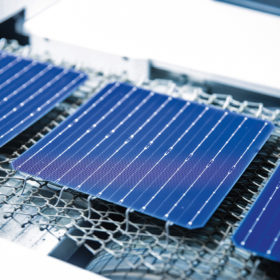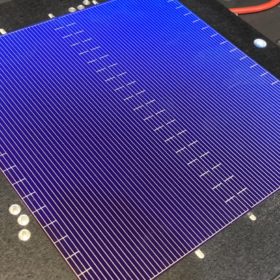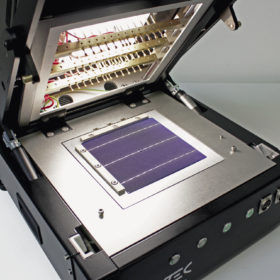LeTID minimal issue for gallium-doped Czochralski silicon PERC products
Scientists from Trina Solar, Longi, Fraunhofer ISE, and other entities have looked at light and elevated temperature-induced degradation (LeTID) in gallium-doped Czochralski silicon (Cz-Si:Ga) PERC cells. They have found little relevant degradation.
PV manufacturing capacity hit 600 GW in 2022
The new edition of the International Technology Roadmap for Photovoltaic (ITRPV), published this week, finds that 295 GW of PV modules was shipped in 2022, and that prices for silicon PV modules fell by 7% over the year. The report finds that price premiums for n-type modules are now marginal, and the technology grew to represent 15% of the market, and is expected to keep growing over the coming decade.
Gallium doping keeps p-type in the frame
Scientists at Germany’s Fraunhofer Institute for Solar Energy Systems (ISE) have investigated gallium-doping in p-type silicon wafers as a route to better performance. Testing these specially produced p-type wafers in TOPCon and heterojunction cell architectures, which several major PV cell manufacturers are gearing up to produce on more expensive n-type wafers, the scientists found that with gallium doping, the p-type wafers can achieve similar or even better cell efficiencies compared to those made so far with n-type wafers.
Gallium doping and solar cell degradation
German scientists have conducted a series of experiments on gallium-doped silicon solar cells to understand the causes of degradation in PV cells and modules treated with gallium rather than boron. They confirmed that the performance losses are caused by a bulk defect in the material, and found that the right combination of light and temperature can “heal” earlier damage and even lead to small improvements in overall cell efficiency.
On the trail of a cause for solar cell LID
Scientists in the United States used sophisticated imaging to delve deep into the structure of a silicon solar cell, revealing for the first time a distinct defect signature for light-induced degradation. Their technique could be used to better understand the mechanisms behind multiple various defects affecting the performance of silicon and other solar cell technologies.
JA Solar granted intellectual property rights for Ga-doping technology
The Chinese company has announced it has acquired intellectual property rights pertaining to various applications of gallium-doped silicon wafers in solar cell applications from Japanese company Shin-Etsu Chemical.




